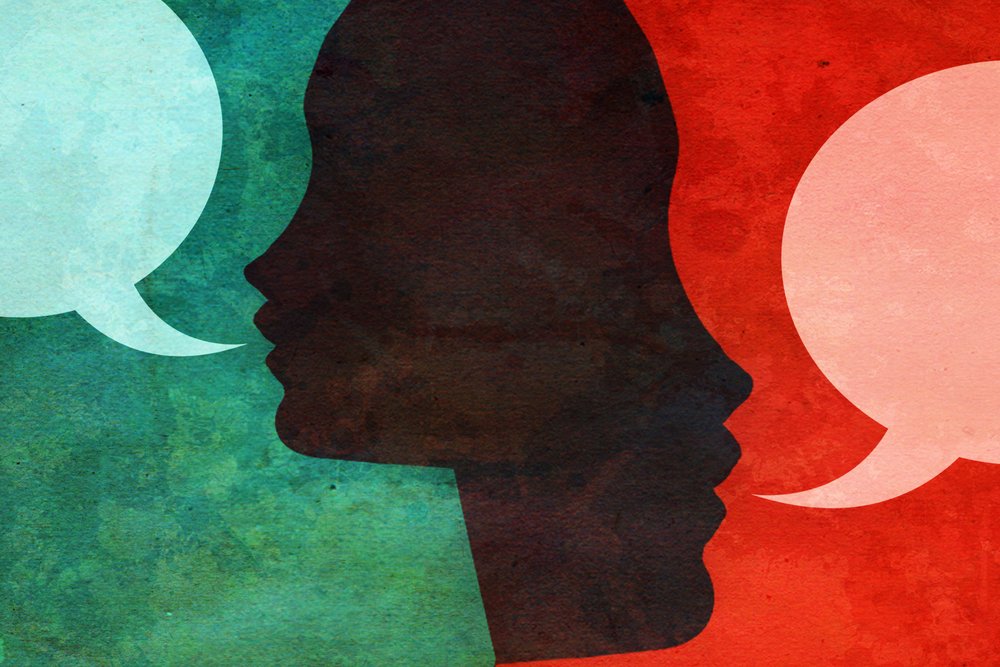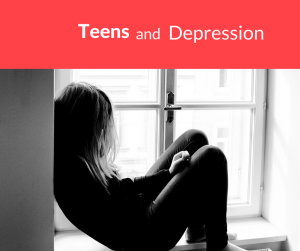A Love Letter to Neurodivergence
/Dear Reader,
This is for all the people who identify as neurodivergent; I hope you feel seen and validated reading this. This is for anyone questioning whether neurodivergence might be a part of their experience, I hope this answers some of your questions, or at least leads you in a direction that will. This is also for anyone who loves, is friends with, or works with someone who is neurodivergent. In a sense, this post is really for everyone. If you’re reading this and think you don’t know anyone who is neurodivergent, guess again. Neurodivergence is mostly an invisible experience. There’s a fair chance you’re in community with neurodivergent people and don’t know due to stigma, masking, and the simple fact that it’s often just not that obvious.
Each person has the fundamental right to be loved and accepted for who they are without needing to change or conform to societal expectations. This is essential for neurodivergent individuals who often face significant mental health challenges largely due to societal pressures and stigma. When people are accepted as their true selves, it fosters a sense of belonging and reduces the isolation that exacerbates these mental health challenges. Supporting neurodivergent people means recognizing their unique strengths and needs and allowing them to navigate the world on their own terms. This contributes to an inclusive society where all people are valued and understood.
What is Neurodivergence?
Neurodivergence is a term that is increasingly being recognized in mainstream culture. You may have seen this term circulating on TikTok or depicted more frequently in television and film. That’s because more people have identified with this experience in recent years. According to the Centers for Disease Control and Prevention (CDC), roughly 15-20% of the population identifies as neurodivergent, and that percentage is expected to keep increasing as awareness and research continue to expand. But, what does it mean to be neurodivergent?
The word neuro refers to the brain. Its Latin roots mean nerves or nervous system. Neurotypes simply refer to different types of brains. Neurodiversity broadly describes differences in cognitive processes and sensory experiences. Neurotypical is the way that most brains function. Our brains are all wired somewhat differently, so neurodiversity exists regardless of whether you have a neurotypical or neurodivergent brain. Again, you will likely encounter many neurodivergent people in life and never know. All of that is to say that neurodivergence is a term used to describe brains that diverge from the norm. It’s important to understand that there’s no “right” way for your brain to work. Diversity is always worth celebrating.
Neurodivergence is an umbrella term for many different kinds of neurotypes, such as Attention-Deficit/Hyperactivity Disorder (ADHD), Autism Spectrum Disorder (ASD), learning disabilities, and more. Synesthesia, Tourette's Syndrome, Dyslexia, Dyscalculia, Dyspraxia, and Obsessive-Compulsive Disorder (OCD), all fall under this umbrella. Anxiety and panic disorders are more frequently considered a form of neurodivergence as well. The neurodivergent umbrella is constantly evolving as it is still a relatively new way of conceptualizing brain differences.
ADHD and ASD are most typically associated with the term neurodivergent. ADHD is a neurodivergence (disorder) that affects someone's ability to focus and pay attention, sit still, and/or control their impulses. There are 3 types of ADHD, predominantly hyperactive, predominantly inattentive, or both. ADD is an outdated term because the predominantly inattentive type captures it. People with ADHD tend to need a lot of stimulation in their environment.
Autism Spectrum Disorder is a neurodivergence that affects a person’s ability to interact socially and increases sensitivity to senses. Autistic brains take in way more information because they have more neural connections. All brains go through a pruning system in early development where unnecessary connections between neurons are removed. Autistic brains do go through pruning, but not as much as a neurotypical brain. This is why folks with autism often need less stimulation in their environment. This contributes to what is called “autistic burnout.” Stimming refers to repetitive or self-stimulating behaviors, such as making movements, and sounds, or saying words that people repeat. Stimming might occur at any time but is often used to calm or self-regulate when someone is overwhelmed. Among other behaviors, stimming might look like someone clapping their hands, tapping their feet, or rubbing or picking their skin. Echolalia is common in autism and involves an involuntary repeating of words or phrases.
AuDHD is a combination of both Autism and ADHD. This probably isn’t a term you have heard of unless you participate in neurodivergent communities. This can be confusing because Autism and ADHD may seem like totally different experiences. There is some overlap though. Both ADHD and Autism are interest-driven. Hyperfocus, the tendency to become completely absorbed in a task, is common in both ADHD and ASD. People with ADHD and ASD tend to experience rejection sensitivity (experiencing rejection more intensely than others) and time blindness (difficulty managing and perceiving time). Before the release of the most recent edition of the Diagnostic and Statistical Manual of Mental Disorders (DSM-5), it was thought that the two conditions could not co-exist. This highlights how this area of understanding is continuously expanding with new research.
Masking is a term used to describe a process by which people may hide their neurodivergent traits and tendencies in attempts to appear normal. Masking can be intentional or an unconscious process learned and adapted over time. This is a term that has been historically used in the Autism community but has been increasingly used for other neurodivergent or mental health experiences. Masking is a strategy that helps people manage social situations, school, and work. It’s a tool people rely on to manage and achieve in those settings, however, it can result in psychological costs. For example, masking can be exhausting and often leads to burnout. It can also be invalidating and cause tension about one’s identity. Some people are high masking, meaning they can conceal their symptoms more, while others are low masking. High support needs and low support needs are also functional labels that are sometimes used within Autism communities. High functioning and low functioning are outdated terms because they are offensive and problematic, and don’t fully capture the complexity of experiences on the spectrum.
What’s it like being neurodivergent?
There’s nothing wrong with being neurodivergent. Remember, different isn’t bad. It’s okay to have needs that are different from other people’s. Many qualities that neurodivergent people possess turn out to be gifts that can help them excel in their careers and lives, such as heightened empathy and compassion, unique perspectives, advanced problem-solving skills, attention to detail, the ability to hyper-focus, creativity and imagination, and a passion for social justice and fairness. One thing I want to be careful of though, is sounding too much like a cheerleader. For neurodivergent people, the struggles are so real.
Most challenges arise for neurodivergent individuals because the world is structured for neurotypical brains. It’s not just having this neurotype alone that causes dysregulation, but rather, certain environments that send the neurodivergent individual into sensory overload or burnout over time. Being neurodivergent is often traumatic for people. Quite literally, a neurodivergent experience involves some degree of nervous system dysregulation, especially in cases of ADHD, ASD, and sensory processing disorders.
Nervous system dysregulation is a key component of trauma. Psychologist and founder of Somatic Experiencing, Peter Levine’s definition of trauma is anything “too much, too soon, or too little (i.e. in cases of neglect)” for our nervous system to handle. I appreciate this broad definition of trauma. This helps us understand that trauma is not only about the event itself but how our bodies interpret the experience. Peter Levine also defines trauma as experiencing fear in the face of helplessness. There’s a lot of overlap with how trauma and neurodivergence presents.
Everybody has a nervous system. The nervous system runs throughout our entire body and has different states. The sympathetic nervous system state is known as the “Fight or Flight” response to a threat. This state also includes other responses such as Freeze, Fawn (to please someone to avoid conflict), and Flop (to become unresponsive and faint). These are all survival responses. They are all primal and adaptive because they can help you survive. The parasympathetic nervous system state, known as the “Rest and Digest” state, is reached when the body is relaxed and can focus on internal processes like digestion.
Dysregulated is another term you’re probably hearing more of. This happens when the parasympathetic and sympathetic nervous system are out of balance. Psychiatrist Dan Siegel, M.D., introduced the concept of the “Window of Tolerance”. The window of tolerance describes the nervous system at its optimal level of arousal, where people can access their executive functioning skills (thanks to the brain's prefrontal cortex that allows for planning, organizing, and regulating emotions), be present, and respond effectively. It’s characterized by a sense of groundedness, openness, and ability to connect with other people. When you’re out of your window of tolerance, you’re either in a state of hyperarousal or hypoarousal. Hyperarousal looks like hypervigilance, heightened anxiety, and irritability. Hypoarousal is also a stress response but looks like shutdown, numbness, disconnection from reality, and dissociation. In the long run, hypoarousal looks like burnout or depression.
Everyone gets dysregulated. Everyone’s window of tolerance is also a little different, meaning every person has a personal capacity to handle distress and tolerate big emotions and challenging experiences. There is nothing to be cured. Your body is designed to be in these different states, but it is important to be able to move in and out of them. The goal is to be able to stay regulated for longer periods and to be able to move from one dysregulated state back into your window of tolerance without getting stuck. It’s common for people to get stuck in a trauma state, and not even realize it. Trauma can shrink your window of tolerance and make you more reactive to stress. Neurodivergent folks tend to be chronically dysregulated. You can work towards widening your window of tolerance though. When you learn how the nervous system works and about various ways to get your body back into its window of tolerance, you learn how to become less reactive to stress and increase your capacity to experience the full range of your emotions.
Growing up neurodivergent is also a traumatic experience in and of itself. Neurodivergent kids attempt to fit in socially and meet developmental milestones based on standardized criteria. This is where masking comes into play. Many people experience deep shame about their differences and confusion about why they are the way they are. When neurodivergence is overlooked and not diagnosed, kids are often considered shy, weird, unique, and/or misunderstood. Growing up neurodivergent is especially traumatic if you are undiagnosed. Especially because there is not an obvious physical difference, neurodivergent kids tend to internalize beliefs that they are somehow like everyone else, but worse or defective. They will likely feel stupid or not good enough as they struggle to understand and accept themselves.
What’s next?
For the most part, people are the experts in their own lives. I hold this sentiment very close to me and it has been a guiding principle in my work as a therapist. Receiving a mental health diagnosis is generally fraught with both pros and cons. It can be especially empowering, however, for neurodivergent people to receive a diagnosis. These labels can help people understand that their brains are not broken, but rather they just work differently. Finding a label can be very comforting.
While aligning with a diagnosis can be very affirming, the process of getting assessed can be challenging as it can be expensive and time-consuming. The mental health world is catching up in the realm of neurodivergence. It may or may not be worth it to pursue an official diagnosis. Even in the mental health field, there’s a lot of stigma and misunderstanding. It’s difficult to identify and diagnose neurodivergence and there’s a long history of misdiagnosis. Historically, girls and people of color were not diagnosed with ADHD or ASD. Things are changing in recent years, but historically all disorders in the DSM were normalized based on middle-class white men. These experiences are deeply personal. No two people with Autism or ADHD are alike. There is a vast range of traits and tendencies that a person may or may not experience. Two people may have the same diagnosis yet experience a different set of symptoms. There are plenty of neurodivergent-friendly providers out there. It’s all about researching and using discernment when pursuing mental health care. There is also validity to self-diagnosis if one has done a lot of research, self-exploration, and sought out the help of a professional like a therapist or other neurodivergent folks with lived experience. If you need accommodations, you have the right to ask for those, whether you have a formal diagnosis or not.
You might be reading this and wondering how you can help the neurodivergent people in your life. Even though our brains are all wired slightly differently, all human brains are wired for connection. This is a basic need that we all have. For connection to occur, we must experience a felt sense of safety. In the 1940s, psychologist Abraham Maslow published the Hierarchy of Needs, a pyramid depicting the order of human needs from the bottom up. Physiological needs are at the lowest level, which includes the most basic things we need to survive, like food, water, clothes, and housing. Next on this hierarchy is safety. Once safety is achieved, love and belonging can occur. Feeling safe entails a sense of security and protection both physically and emotionally. Emotional safety involves knowing you can be yourself and express your thoughts and feelings without fear of judgment, harm, or rejection. Safety allows for relaxation, authenticity, and trust that your vulnerabilities will be respected and supported. Feeling safe in relationships fosters the ability to grow, thrive, and be confident.
As mentioned before, it can feel embarrassing and shameful to be neurodivergent and to talk about it with others. It’s very vulnerable to share about neurodivergent experiences, but it’s also necessary. You can create safety for your loved ones by building a warm, loving, and compassionate environment based on nonjudgment and curiosity. Consistency is important too. Check in regularly, plan around people’s particular needs, establish routines, and talk openly about differences. It signals safety to let your loved ones know that struggling is normal. Sharing and talking about it helps when we feel validated and cared for.
There’s also sometimes space to work through things collaboratively. If it involves your relationship, communicate how you can figure out what works best for each of you and be willing to make accommodations. If it is something they are sharing with you but does not involve you, check in about what the person’s needs are in sharing. A simple rule of thumb in any relationship (neurodivergent or not) is to say something like, “Thank you for sharing. I am here for you and want to support you. I am listening. Would you like me to simply validate and empathize with your experience or are you hoping for problem solving and solutions?” Oftentimes, what we need most of all is to feel heard.
People deserve to be believed about who they are and what they say their experiences are. Even if someone else’s experiences seem confusing to you or you do not think they are neurodivergent, that does not mean that you have a better understanding of who someone is. As I’ve laid out here, these experiences are layered and complex. There is a ton of misunderstanding and misinformation about neurodivergence in the general public. Many people do not have an accurate understanding of neurodiversity, although this is starting to shift with increased awareness and dialogue. Take it upon yourself to do further reading, listen to podcasts, join a support group, or simply ask and allow people to tell you about their experiences.
So, it’s important to stay open-minded. Above all else, people deserve to be loved and accepted as they are, without pressure to change or fit into a box that was not made for them. This is especially important considering neurodivergent people are at much more risk for depression, anxiety, thinking about and dying by suicide, and substance abuse. This goes back to that deep-seated belief that “something is wrong with me.” But, nothing is wrong and nothing needs to be fixed. You can remind yourself and your loved ones that your brain works beautifully and is needed. Whether you’re on your journey of self-discovery as a neurodivergent person or you want to learn more about the neurodivergent people in your life, go slow and be gentle with yourself. It takes a lot of time and effort to change your patterns of thinking, learn how to regulate yourself, and have vulnerable conversations.
With warmth and gratitude,
Kaitlyn Folkes, M.A.
References:
CDC Data and Statistics (2024)
https://www.cdc.gov/adhd/data/index.html
https://www.cdc.gov/autism/data-research/index.html
The Developing Mind Daniel J. Siegel (1999)
The Myth of Normal by Gabor Matė (2023)
Unmasking Autism: Discovering the New Faces of Neurodiversity by Devon Price, PhD (2022)
Waking the Tiger: Healing Trauma by Peter A. Levine, PhD (1997)
Your Brain’s Not Broken by Tamara Rosier, PhD (2021)








